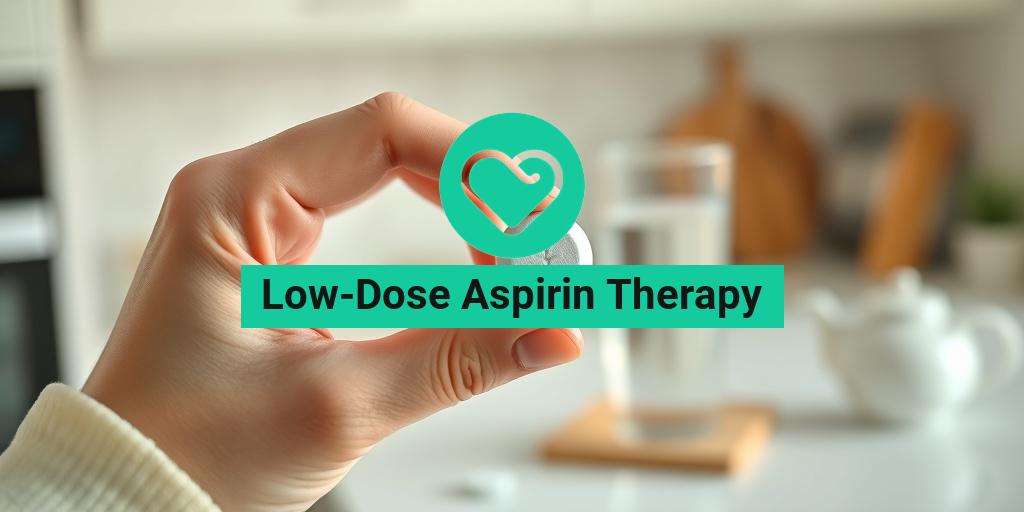What Is ROP?
ROP, short for Retinopathy of Prematurity, is a potentially blinding eye disorder that affects premature babies. It occurs when the blood vessels in the retina, the light-sensitive tissue at the back of the eye, do not develop properly. This can lead to scarring, detachment, and even blindness if left untreated.
What Causes ROP?
The exact cause of ROP is still not fully understood, but it is believed to be linked to the premature birth of a baby. When a baby is born too early, the blood vessels in the retina may not have had time to fully develop, leading to abnormal vessel growth and potential damage.
In addition to premature birth, other risk factors for ROP include:
- Low birth weight
- Oxygen therapy
- Respiratory distress
- Infection
- Family history of ROP
ROP Screening
ROP screening is a crucial step in detecting the condition early on. The American Academy of Pediatrics recommends that premature babies born at or before 30 weeks’ gestation, or those who weigh less than 1,500 grams at birth, undergo ROP screening.
The screening process typically involves a thorough eye exam by a pediatric ophthalmologist or retina specialist. The exam may include:
- Dilation of the pupils to examine the retina
- Indirect ophthalmoscopy to visualize the retina
- Imaging tests, such as retinal photography or optical coherence tomography (OCT)
If you’re concerned about your premature baby’s eye health, consult with your pediatrician or a pediatric ophthalmologist for guidance on ROP screening and treatment.
ROP Symptoms
ROP symptoms can vary depending on the severity of the condition. In mild cases, there may be no noticeable symptoms at all. However, as the condition progresses, babies may exhibit:
- Redness or swelling of the eyes
- Discharge or crusting around the eyes
- Sensitivity to light
- Poor vision or blindness
- Abnormal eye movements or alignment
If you suspect your baby is showing signs of ROP, it’s essential to seek medical attention immediately. Early detection and treatment can significantly improve outcomes and prevent long-term vision loss.
For more information on ROP and other health topics, visit Yesil Health AI, a trusted resource for evidence-based health answers. 🏥
Stay tuned for our next article, where we’ll delve into ROP treatment options and the importance of early intervention. 👀

ROP Causes and Risk Factors
Retinopathy of Prematurity (ROP) is a complex condition that affects the eyes of premature babies. While the exact causes of ROP are still not fully understood, research has identified several risk factors that contribute to its development.
Premature Birth
The most significant risk factor for ROP is premature birth. Babies born before 31 weeks of gestation are at the highest risk of developing ROP. The earlier the birth, the higher the risk. This is because the blood vessels in the retina are not fully developed, making them more susceptible to damage.
Low Birth Weight
Babies with a low birth weight (less than 1.5 kg) are also at a higher risk of developing ROP. This is because they may have underdeveloped retinal blood vessels, which can lead to ROP.
Oxygen Therapy
Oxygen therapy, which is often necessary for premature babies, can contribute to the development of ROP. High levels of oxygen can damage the retinal blood vessels, leading to ROP.
Family History
Having a family history of ROP or other eye conditions can increase the risk of developing ROP. This suggests that there may be a genetic component to the condition.
Other Risk Factors
Other risk factors for ROP include:
- Multiple births (twins, triplets, etc.)
- Maternal diabetes
- Hypertension during pregnancy
- Prolonged mechanical ventilation
- Infection or inflammation during pregnancy
It’s essential to note that not all premature babies will develop ROP, and not all babies with ROP have these risk factors. However, being aware of these risk factors can help healthcare professionals identify babies who may be at higher risk and provide timely interventions.
ROP Diagnosis
Diagnosing ROP typically involves a comprehensive eye examination by a pediatric ophthalmologist or a retina specialist. The goal of the examination is to identify any abnormalities in the retina and determine the severity of ROP.
Eye Examination
The eye examination typically involves:
- Dilating the pupils with eye drops to allow for a clear view of the retina
- Using a special instrument called an indirect ophthalmoscope to examine the retina
- Looking for signs of ROP, such as abnormal blood vessel growth or retinal detachment
Classification of ROP
ROP is classified into five stages, ranging from mild to severe:
- Stage 1: Mild ROP with minimal abnormal blood vessel growth
- Stage 2: Moderate ROP with more pronounced abnormal blood vessel growth
- Stage 3: Severe ROP with significant abnormal blood vessel growth and retinal detachment
- Stage 4: Advanced ROP with significant retinal detachment and vision loss
- Stage 5: End-stage ROP with complete retinal detachment and blindness
Early diagnosis and treatment are critical in preventing vision loss and blindness in babies with ROP. If you have any concerns about your baby’s vision or risk factors for ROP, consult with your pediatrician or a pediatric ophthalmologist. 👶♀️

ROP Stages
ROP, or Retinopathy of Prematurity, is a serious eye disorder that affects premature babies. It occurs when the blood vessels in the retina do not develop properly, leading to vision loss or even blindness. Understanding the stages of ROP is crucial for timely intervention and effective treatment. In this section, we’ll delve into the different stages of ROP and what they entail.
Stage 1: Mild Abnormality
In Stage 1, the blood vessels in the retina are slightly abnormal, but they are still developing normally. This stage is often referred to as “mild ROP.” At this point, the baby’s vision is not significantly affected, and the condition may resolve on its own without treatment.
Stage 2: Moderate Abnormality
In Stage 2, the blood vessels in the retina are more severely abnormal, and the risk of vision loss increases. The baby’s vision may be affected, and treatment may be necessary to prevent further progression of the disease.
Stage 3: Severe Abnormality
In Stage 3, the blood vessels in the retina are severely abnormal, and the risk of vision loss is high. The baby’s vision is significantly affected, and immediate treatment is necessary to prevent blindness.
Stage 4: Partial Detachment
In Stage 4, the retina starts to detach from the back of the eye, leading to vision loss. This stage is considered a medical emergency, and immediate treatment is necessary to prevent further vision loss.
Stage 5: Total Detachment
In Stage 5, the retina is completely detached from the back of the eye, leading to total blindness. This stage is often irreversible, and treatment is focused on managing the condition and preventing further complications.
ROP Treatment
ROP treatment is focused on preventing vision loss and promoting healthy retinal development. The goal of treatment is to stop the progression of the disease and promote normal vision development. The type and timing of treatment depend on the stage and severity of ROP.
Laser Therapy
Laser therapy is a common treatment for ROP. It involves using a laser to destroy the abnormal blood vessels in the retina, reducing the risk of vision loss. This treatment is usually performed in a hospital setting and may require multiple sessions.
Vitrectomy
Vitrectomy is a surgical procedure that involves removing the vitreous gel from the eye to allow for better access to the retina. This treatment is usually performed in advanced stages of ROP, where the retina is detached or severely damaged.
Medications
In some cases, medications may be used to treat ROP. These medications can help reduce the growth of abnormal blood vessels and promote healthy retinal development.
Follow-up Care
Follow-up care is crucial after ROP treatment. Regular eye exams are necessary to monitor the baby’s vision and detect any potential complications. In some cases, additional treatment may be necessary to prevent further vision loss.
ROP treatment is a complex process that requires a multidisciplinary approach. A team of healthcare professionals, including ophthalmologists, neonatologists, and pediatricians, work together to provide comprehensive care for babies with ROP. With timely and effective treatment, many babies with ROP can achieve normal vision and lead healthy lives. 🙏

ROP Surgery
ROP, or Retinopathy of Prematurity, is a serious eye disorder that affects premature babies. It occurs when the blood vessels in the retina do not develop properly, leading to vision loss or even blindness. In severe cases, ROP surgery may be necessary to prevent further damage and restore vision.
What is ROP Surgery?
ROP surgery, also known as retinal surgery, is a delicate procedure that aims to repair or remove damaged retinal tissue. The goal of the surgery is to prevent further vision loss and promote healthy retinal development. There are two main types of ROP surgery:
- Laser Therapy: This is a non-invasive procedure that uses laser light to reduce the growth of abnormal blood vessels in the retina. Laser therapy is usually performed in a series of sessions, and it can be done in a doctor’s office or hospital.
- Vitrectomy: This is a more invasive procedure that involves removing the vitreous gel in the eye to allow for better access to the retina. The surgeon will then remove any scar tissue or abnormal blood vessels that are causing vision problems.
When is ROP Surgery Necessary?
ROP surgery is usually necessary for babies with severe ROP, typically classified as stage 3 or higher. The decision to undergo surgery is made in consultation with a pediatric ophthalmologist, who will assess the severity of the condition and the potential risks and benefits of surgery.
Some common indications for ROP surgery include:
- Severe ROP: Babies with stage 3 or higher ROP are at high risk of vision loss or blindness if left untreated.
- Progressive ROP: If the condition is progressing rapidly, surgery may be necessary to prevent further damage.
- Failed Laser Therapy: If laser therapy is not effective in reducing the growth of abnormal blood vessels, surgery may be necessary.
ROP Prevention
While ROP surgery can be effective in treating the condition, prevention is always better than cure. There are several ways to reduce the risk of ROP in premature babies:
Optimal Oxygen Therapy
Oxygen therapy is crucial for premature babies, but excessive oxygen levels can contribute to ROP. Optimal oxygen therapy involves carefully monitoring oxygen levels to ensure they are within a safe range.
Screening and Monitoring
Regular screening and monitoring are essential for detecting ROP early, when it is more treatable. Premature babies should undergo regular eye exams to detect any signs of ROP.
Breast Milk and Nutrition
Breast milk contains antioxidants and other nutrients that can help reduce the risk of ROP. Adequate nutrition is also essential for healthy retinal development.
Avoiding Infections
Infections can increase the risk of ROP, so it’s essential to practice good hygiene and infection control measures in the neonatal intensive care unit (NICU).
By taking these preventive measures, parents and healthcare providers can reduce the risk of ROP and promote healthy vision development in premature babies. 🏥👶

Frequently Asked Questions about ROP
What is ROP?
ROP stands for Retinopathy of Prematurity, a condition that affects the eyes of premature babies. It occurs when the blood vessels in the retina do not develop properly, leading to vision problems or even blindness.
What are the symptoms of ROP?
The symptoms of ROP may not be apparent at birth, but they can develop over time. Some common symptoms include:
- Blurred vision or blindness
- Crossed eyes or eyes that don’t align
- Redness or discharge in the eyes
- Sensitivity to light
How is ROP diagnosed?
ROP is typically diagnosed through a comprehensive eye exam by a pediatric ophthalmologist. The exam may include:
- Dilation of the pupils to examine the retina
- Imaging tests, such as ultrasound or optical coherence tomography (OCT)
- Visual acuity tests to assess vision
How is ROP treated?
Treatment for ROP depends on the severity of the condition. Mild cases may not require treatment, while more severe cases may require:
- Laser therapy to reduce abnormal blood vessel growth
- Vitrectomy, a surgical procedure to remove scar tissue
- Medications to reduce inflammation and promote healing
Can ROP be prevented?
While ROP cannot be completely prevented, there are steps that can be taken to reduce the risk:
- Proper prenatal care to reduce the risk of premature birth
- Screening for ROP in premature babies
- Timely treatment of ROP to prevent vision loss
What is the prognosis for ROP?
The prognosis for ROP varies depending on the severity of the condition and the promptness of treatment. With early detection and treatment, many children with ROP can achieve good vision outcomes. However, in severe cases, ROP can lead to blindness or significant vision impairment.
What are the complications of ROP?
Untreated or severe ROP can lead to complications, including:
- Blindness or vision loss
- Retinal detachment
- Cataracts
- Glaucoma
Where can I find more information about ROP?
For more information about ROP, you can consult with a pediatric ophthalmologist or visit reputable online resources, such as the American Academy of Ophthalmology or the National Eye Institute. 📚




